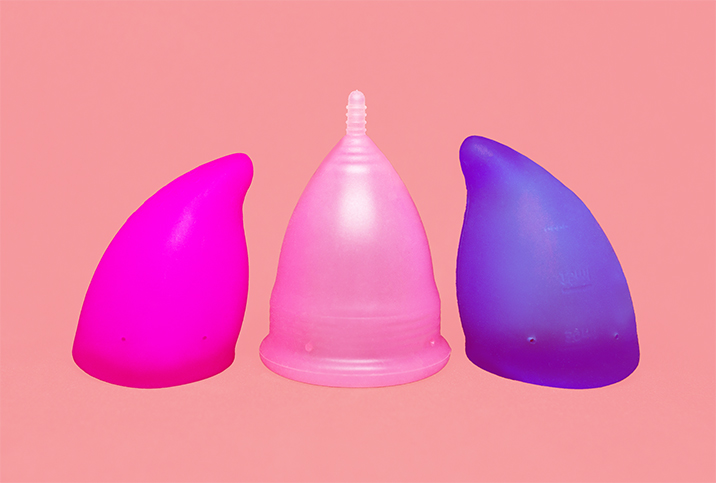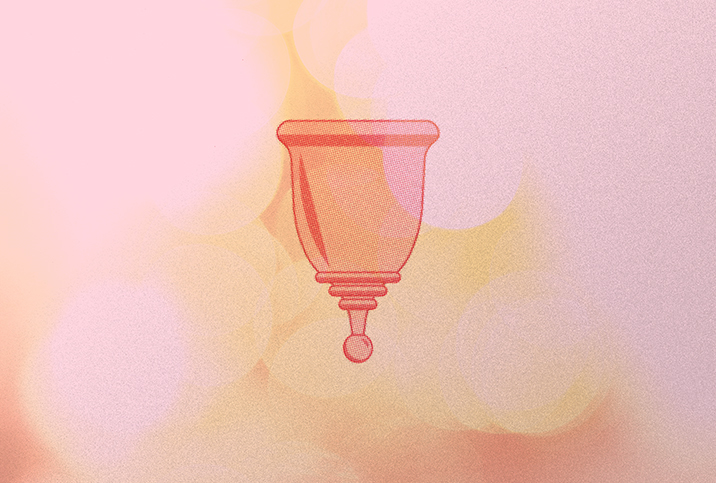The Facts About Menstrual Products

Menstrual products have evolved over the years to be more effective, comfortable and lifestyle-friendly. If you're unhappy with what you've tried in the past, it may be time to explore today's options.
Having more than one form of protection allows you to pick the best choice for the occasion at hand. After all, what works well for a day at the beach may not be the best choice for an overnight trip. Before you head to the store or order your usual toiletries online, consider the range of menstrual products currently available.
Tampons
Tampons are inserted into the vagina using the included cardboard or plastic applicator—some don't even have an applicator. They absorb menstrual fluid before it leaks and can be found in both super-absorbent and ultra-thin varieties. Err on the lighter side of coverage. Using a higher absorbency tampon can increase the risk of a rare but serious condition called toxic shock syndrome. Also, removing a dry tampon can cause microtears of the vagina and is quite uncomfortable.
Tampons should be changed about every four hours and should not be left in for more than eight hours, as that is associated with increased risk for toxic shock syndrome. For this reason, tampons are not advised for overnight use.
If you find that your tampon (or pad) gets full every one to two hours, you should contact your doctor. This rate of menstrual bleeding is considered very heavy and may signify an underlying issue. Seek medical attention right away if excessive bleeding causes you to feel faint or your heart begins to race.
Pads
Pads are the most frequently chosen type of period product. Many people start using them during puberty and continue to depend upon them either exclusively or in combination with other period products. Changing your pad every three to four hours during the day can reduce odor from accumulated menstrual blood. Since pads do not carry the same risk of toxic shock syndrome as tampons, they are a great option for use overnight. Be careful never to flush used pads down the toilet unless you have a plunger nearby. Instead, roll them up in toilet paper and discard them in a trash bin. Pads are not flushable.
There’s no shortage of variety in the sanitary pad market. You can opt for scented (but you shouldn't, because they can cause skin irritation and itching) or unscented, wings or no wings (which help secure the pad onto your underwear and catch any errant flow) and a range of lengths and thicknesses. You'll likely prefer different features for different times in your cycle and different activities, so it can be helpful to have a few different types of pads on hand at all times. Wings may offer better protection for active workouts, when you wear a white outfit or while sleeping.
Panty liners are similar to pads but are best reserved for extra-light days. Some people who menstruate wear liners every day to manage daily discharge, while others use them for extra protection when they're anticipating an upcoming period or trying to protect against breakthrough spotting. You can even find panty liners designed to fit thong underwear.
Panty liners made with a nonpermeable backing were shown to trap in more heat and humidity and increase vulvar pH. This can affect the vulvar microflora, so choosing a liner with a permeable backing is preferable. Better yet, outside of menstruation, ditch panty liners altogether and get in the habit of changing your cotton underwear around midday. Doing so will create more laundry but can help you feel comfortable and keep your vulva happy at the same time.
Choosing the store brand, clipping coupons and buying in bulk are some affordable strategies for stocking up on pads and making sure you're always prepared.
Menstrual cups and discs
Menstrual cups have been around for several decades, but they haven't always been popular. After almost disappearing in the 1980s, menstrual cups appear to be making a major comeback. By 2026, researchers predict, the menstrual cup market will be up to $1.89 billion worldwide. If you've never used a menstrual cup, you may be a little confused or skeptical about its protection power.
Menstrual cups are either disposable or reusable. Even most disposable versions are more eco-friendly than pads or tampons since menstrual cups are meant to be used for the entire duration of your period. You'll need to empty it at least every 12 hours. Although menstrual cups are a lower-maintenance product in some respects, they can be messy and inconvenient to empty.
Reusable menstrual cups can be sterilized in boiling water between cycles. Many people prefer to boil theirs for three to five minutes, but the user needs to follow the manufacturer's instructions because not all cups can be boiled. Between cycles, cups should not be stored in an air-tight container (like a plastic baggie or storage container) because they needs airflow. They often come with a little fabric storage bag for this reason.
Because menstrual cups capture period blood before it comes into contact with the outside air, you don’t have to worry about odor as you might with pads. Menstrual cups also preserve your body's natural pH balance, unlike tampons, which can absorb and remove beneficial bacteria inadvertently.
If you're interested in trying a menstrual cup but confused about how to insert it, talk to your OB-GYN. Your doctor can guide you through the process and help you select the right product based on your anatomy and lifestyle. People who are allergic to latex should opt for a silicone or plastic menstrual cup model instead of those made out of rubber. People who are not comfortable inserting a tampon may have trouble with a menstrual cup. It comes down to the person's comfort level with inserting things vaginally.
Menstrual cups come in myriad shapes, sizes, materials and stem options. A person may need to try several before they find one they like. It is important to understand that there can be a huge learning curve, so definitely keep trying—in the shower the first few times, ideally, so you're less focused on the potential for mess while getting the technique down.
Menstrual discs are similar to menstrual cups but shaped a bit differently. Both products can be worn for up to 12 hours (including overnight) and are comfortable once securely in place. Unlike menstrual cups, menstrual discs don't rely on suction, and you can even wear a menstrual disc during intercourse. Discs tend to be a little messier but still offer the long-term protection that many people prefer.
Period panties
As opposed to most other types of menstrual protection, period panties are a relatively new product. Introduced by a single brand in the early 2000s, it wasn't long before various underwear manufacturers joined the marketplace to claim their stake in this clever concept. Menstrual underwear has an obvious appeal as an alternative to peel-and-stick sanitary pads. Today, you can find period panties in almost any color, shape and size. Some brands are available for a slight markup compared with regular or somewhat higher-end panty prices. Since there's a lot of competition for period panties these days, it's easy to find discounts and coupon codes with a bit of searching.
Many people see period panties as an investment, so it's worth doing your research and reading reviews before you buy. Underwear styles, fabrics and sizes vary widely between brands, so you may have to try a few products before settling on the right one for you. If you were disappointed by your first attempt with period panties, it's wise not to get discouraged too quickly—you may have a change of heart by switching to another version.
Period panties don't have to be reserved for your menstrual cycle. They can also improve the quality of life for pregnant women (with increased vaginal discharge) or those who struggle with minor incontinence. You can pair period panties with other forms of menstrual protection, like tampons or menstrual cups, to ensure extra coverage during times of heavy flow.
After spending your hard-earned cash on a pair of period panties, don't make the mistake of ruining them in the wash. Take time to review the care instructions before you make a purchase to make sure you're willing to do what it takes to ensure they'll stand the test of time. You may need to avoid putting them in the dryer or using harsh detergents. Although period panties seem like a time-saver, consider the laundry requirements as you weigh your decision on which to buy.
If you don't want to go all out on period panties but still want a more sustainable option, you can try reusable pads. Reusable pads are made from cotton or bamboo with wings that snap together to wrap around and connect to your underwear. Although they may cost a bit more, reusable pads could help you save money in the long run. Plus, you won't have to rush out to the store or fear running out as you might with disposable versions. There is a bit more work involved with reusable pads, which often need to be rinsed and soaked before washing. Study up on different brands so you understand what's required before you make a purchase.
How to choose the right product for you
For those who don't have much experience going beyond pads and tampons, the idea of experimenting with new period products can be overwhelming. The threat of leaks—or, worse, an infection—can keep you from branching out of your comfort zone. Items like menstrual cups and discs present an initial learning curve, but nothing you can't overcome.
As shoppers begin searching for more sustainable products that don't interfere with the body's natural pH balance, it's no surprise to see these forms of menstrual products grow in popularity. As long as you're following the instructions for safe and effective use, it's up to you how you choose to manage your menstrual cycle. Sometimes sustainability is more realistic to achieve in other areas of life than with your period. Finding menstrual products that are reliable and easy-to-use will help prevent your time-of-the-month from getting in the way of your busy everyday life.


















